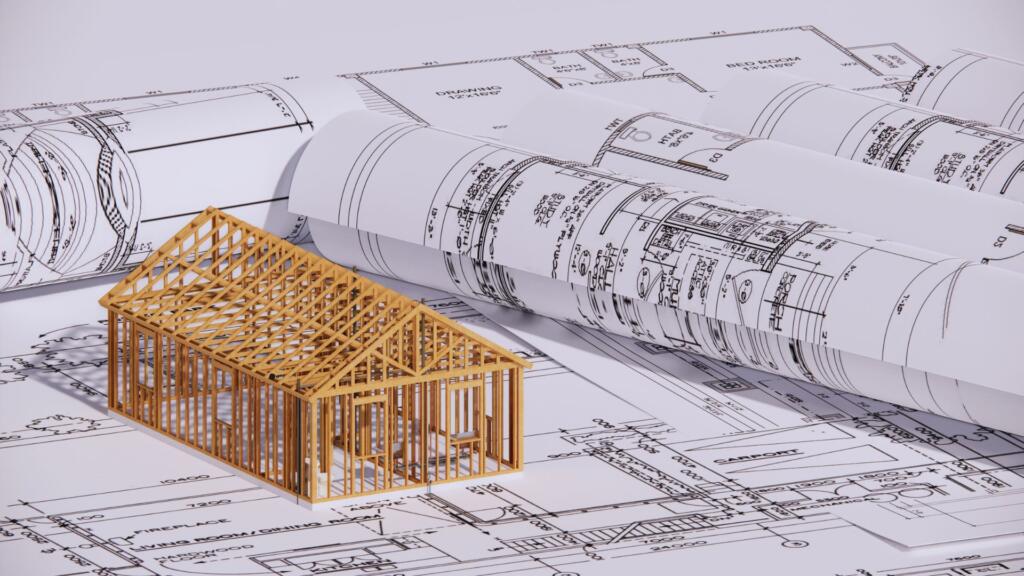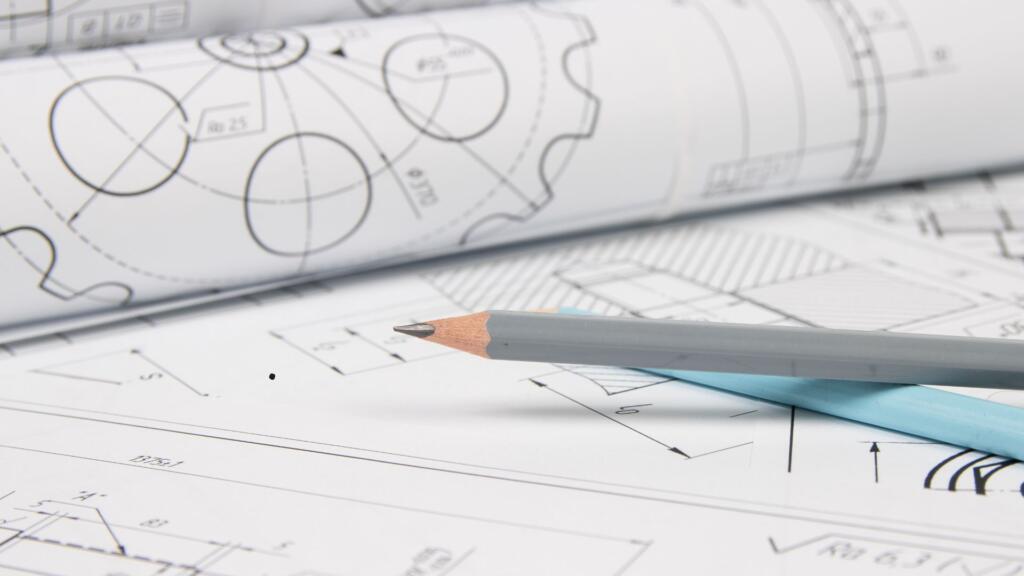
/con
The Role of CAD in Custom Rug Design
In today’s fast-paced world, the rug industry is evolving rapidly, with technology playing a crucial role in transforming traditional design methods. Among the innovative tools revolutionizing this field is Computer-Aided Design (CAD). CAD is not only streamlining the custom rug design process but also enhancing the precision and creativity involved in rug prototyping. This article delves into the significant role of CAD in rug design and prototyping, highlighting its impact and benefits.
What is CAD and How Does it Work in Rug Design?
Computer-Aided Design, commonly known as CAD, is a technology used to create precise drawings and models in various industries. In rug design, CAD software allows designers to create, modify, and optimize designs digitally. This technology offers a plethora of features that aid in designing intricate patterns and layouts with high accuracy.
Understanding CAD Technology
At its core, CAD technology involves the use of computer systems to assist in the creation, modification, analysis, or optimization of a design. In the context of rug design, CAD software serves as a digital canvas where designers can bring their concepts to life with precision and flexibility. The software provides a suite of tools that facilitate the creation of detailed and complex patterns that would be challenging to achieve manually.
Digital Design and Modification
One of the primary advantages of CAD in rug design is its ability to digitally manipulate and modify designs effortlessly. Designers can experiment with a variety of elements, such as colors, textures, and patterns, all within a single platform. This capability not only saves time but also allows for a higher degree of creativity, enabling designers to push the boundaries of traditional rug patterns.
Integration with Other Technologies
CAD software often integrates seamlessly with other technological tools and platforms, enhancing its functionality and application in rug design. For instance, CAD can be paired with 3D rendering software to provide realistic visualizations of designs, offering an immersive experience for both designers and clients. Such integrations make CAD an indispensable tool in the modern rug design toolkit.
Enhanced Precision and Detail
One of the standout benefits of using CAD in rug design is the precision it brings to the table. Traditional methods often involve hand-drawing designs, which can be time-consuming and prone to errors. CAD software eliminates these issues by allowing designers to create detailed and accurate designs that can be easily modified and scaled.
Precision in Design
The precision offered by CAD software is unparalleled, allowing designers to create intricate patterns with exact measurements. This accuracy ensures that the final product aligns perfectly with the initial design specifications, reducing the potential for errors during production. The ability to work with precise dimensions is particularly crucial when creating custom or bespoke rugs that require exact fits.
Detailed Pattern Creation
CAD software excels in facilitating the creation of detailed and complex patterns. Designers can employ a variety of tools to craft intricate designs that would be difficult to achieve manually. The software’s capabilities allow for a high degree of detail, ensuring that even the most complex patterns are rendered accurately and beautifully.
Scaling and Modifications
One of the key advantages of using CAD is the ease with which designs can be scaled and modified. Whether adjusting the size of a pattern or experimenting with different color schemes, CAD allows designers to make changes quickly and efficiently. This flexibility is invaluable in the custom rug design process, where client preferences may require multiple iterations.
Flexibility and Efficiency
CAD tools enable designers to experiment with different patterns, colors, and textures efficiently. The ability to visualize changes in real-time without having to start from scratch saves time and resources. This flexibility is particularly advantageous in custom rug design, where clients may request multiple iterations.
Real-Time Visualization
The ability to visualize designs in real-time is a game-changer in the rug design industry. With CAD, designers can see the immediate impact of changes to patterns, colors, and textures, allowing for quick decision-making and adjustments. This real-time feedback loop enhances the creative process, making it more dynamic and responsive to client needs.
Efficient Design Process
CAD streamlines the design process by eliminating the need for repetitive manual tasks. Designers can focus on creativity and innovation, while the software handles the technical aspects of design creation. This efficiency not only speeds up the design process but also allows for more complex and sophisticated designs to be developed within shorter timeframes.
Resource Optimization
By reducing the need for physical prototypes and minimizing trial-and-error, CAD helps designers optimize resources effectively. The digital nature of CAD means that materials are not wasted on unnecessary prototypes, and designs can be perfected before any physical production begins. This resource optimization is both cost-effective and environmentally friendly.
The Role of CAD in Custom Rug Design

Custom rug design is a growing trend, with clients seeking unique, personalized pieces that reflect their taste and style. CAD plays a pivotal role in this process by offering tools that cater to bespoke design needs.
Meeting Client Expectations
CAD software allows designers to create virtual prototypes that clients can review before the actual production begins. This capability ensures that the client’s expectations are met and reduces the likelihood of dissatisfaction with the final product. Clients can visualize the design, make suggestions, and approve changes, leading to a more collaborative process.
Customization and Personalization
The demand for personalized and customized rugs is on the rise, as clients seek to express their individuality through unique designs. CAD empowers designers to meet this demand by providing tools that allow for extensive customization of patterns, colors, and textures. Whether a client desires a rug that matches their interior decor or one that features a personal motif, CAD makes it possible to deliver a truly bespoke product.
Enhancing Client Collaboration
CAD facilitates enhanced collaboration between designers and clients by providing a visual platform for communication. Clients can engage with the design process more interactively, providing feedback and suggestions directly on the digital prototype. This level of collaboration ensures that the final product aligns with the client’s vision and expectations.
Streamlined Production Process
Once the design is finalized, CAD software can generate precise production specifications. This feature streamlines the manufacturing process, ensuring that the final product matches the approved design with minimal discrepancies. The result is a high-quality rug that meets the client’s exact specifications.
Accurate Specifications
CAD software generates precise specifications that guide the production process, ensuring that every detail of the design is faithfully reproduced. This accuracy minimizes the risk of errors during manufacturing, leading to a final product that matches the client’s expectations.
Efficient Manufacturing Workflow
By providing detailed design specifications, CAD facilitates a more efficient manufacturing workflow. Production teams can rely on the digital blueprints created by CAD to guide their processes, reducing the need for manual interventions and adjustments. This efficiency translates into faster production times and consistent quality.
Consistency and Quality Control
The precision and accuracy provided by CAD ensure that each rug produced meets high standards of quality and consistency. By minimizing discrepancies between the digital design and the final product, CAD enhances quality control, leading to greater customer satisfaction and trust in the brand.
Rug Design Software: Tools of the Trade
Several CAD software options are available specifically for rug design, each offering unique features that cater to different aspects of the design process.
Popular CAD Software for Rug Design
- AutoCAD: Known for its versatility, AutoCAD is widely used in the rug industry for its robust design and drafting capabilities.
- Adobe Illustrator: While not a traditional CAD tool, Adobe Illustrator is favored for its vector graphic capabilities, making it ideal for intricate pattern design.
- Rhino: Rhino offers advanced modeling tools that are particularly useful for complex and detailed rug designs.
Specialized CAD Tools for Rug Design
Beyond the popular options, there are specialized CAD tools designed specifically for textile and rug design. These tools often incorporate features tailored to the unique needs of the industry, such as pattern repetition, texture mapping, and color matching. Designers can choose from a range of software options that best suit their specific project requirements.
Evaluating Software Features
When selecting CAD software for rug design, it’s important to evaluate the features offered by each tool. Considerations such as ease of use, compatibility with other design tools, and the ability to handle complex designs should be taken into account. Additionally, the software’s support for industry-specific functionalities, like pattern scaling and color management, can significantly impact the design process.
Choosing the Right Software
Selecting the appropriate CAD software depends on the specific needs of the designer and the project. Factors such as ease of use, compatibility with other tools, and the level of detail required should be considered when choosing rug design software.
Assessing Project Requirements
Understanding the specific requirements of a project is crucial when choosing the right CAD software. Designers should consider factors such as the complexity of the design, the need for customization, and the level of detail required. By aligning software capabilities with project needs, designers can select a tool that enhances their workflow and creativity.
Software Compatibility and Integration
Compatibility with other tools and platforms is an important consideration when selecting CAD software. Designers should ensure that their chosen software can integrate with other design tools, such as 3D rendering software or digital printing technologies. Seamless integration enhances the overall design process and allows for greater flexibility and creativity.
Cost and Accessibility
The cost and accessibility of CAD software are also important factors to consider. Designers should evaluate the pricing models of different software options, considering factors such as subscription fees, licensing costs, and available support services. Additionally, the availability of training resources and user communities can enhance the accessibility and usability of the software.
Prototyping with CAD: Bringing Designs to Life
Prototyping is an essential phase in the rug design process, allowing designers to test and refine their creations before full-scale production. CAD technology enhances this stage by providing accurate virtual models and simulations.
Virtual Prototyping
CAD allows designers to create virtual prototypes that can be analyzed and modified without the need for physical samples. This approach not only saves time and resources but also allows for more experimentation and creativity.
Digital Testing and Analysis
Virtual prototyping with CAD enables designers to digitally test and analyze their designs before committing to physical production. This capability allows for a thorough examination of design elements, such as pattern alignment, color distribution, and texture placement. By identifying potential issues early in the process, designers can make informed adjustments and optimize their designs.
Iterative Design Refinement
The iterative nature of virtual prototyping supports continuous design refinement and improvement. Designers can easily make modifications to their digital prototypes, experimenting with different design elements and configurations. This iterative approach encourages creativity and innovation, resulting in more refined and polished final designs.
Realistic Visualizations
With CAD, designers can generate realistic renderings of their designs, providing a clear picture of how the final product will look. These visualizations are invaluable for making design decisions and presenting concepts to clients.
High-Fidelity Renderings
CAD software allows for the creation of high-fidelity renderings that accurately represent the final product. These realistic visualizations provide a comprehensive view of the design, enabling designers and clients to evaluate the aesthetics and functionality of the rug. High-quality renderings enhance decision-making and facilitate effective communication of design concepts.
Enhancing Client Presentations
Realistic visualizations are a powerful tool for client presentations, offering a tangible representation of the proposed design. Clients can visualize the final product in a realistic context, helping them make informed decisions and provide valuable feedback. This level of engagement enhances client satisfaction and strengthens the designer-client relationship.
Bridging the Gap Between Design and Production
By providing detailed and accurate visualizations, CAD helps bridge the gap between the design and production stages. Designers can ensure that their creative vision is faithfully translated into the final product, minimizing the risk of discrepancies and enhancing overall quality.
The Impact of CAD on the Rug Industry
The integration of CAD in rug design and prototyping has had a profound impact on the industry, influencing both the creative and production processes.
Increased Creativity and Innovation
CAD tools empower designers to push the boundaries of creativity, experimenting with complex patterns and innovative designs that were previously difficult to achieve with traditional methods.
Expanding Design Possibilities
The capabilities of CAD have expanded the possibilities for rug design, allowing designers to explore new patterns, textures, and color schemes. The software’s flexibility and precision enable the creation of innovative and imaginative designs that capture the attention of clients and consumers alike.
Fostering Artistic Expression
CAD empowers designers to express their artistic vision in new and exciting ways. The ability to experiment with different design elements and configurations encourages creative exploration and experimentation, leading to more unique and captivating rug designs.
Improved Quality and Consistency
The precision and accuracy offered by CAD result in higher quality products with consistent results. This improvement in quality enhances customer satisfaction and can lead to increased demand for custom designs.
Enhancing Product Quality
The use of CAD in rug design ensures that each product meets high standards of quality and craftsmanship. The precision and accuracy offered by the software translate into meticulously crafted rugs that showcase intricate details and flawless execution.
Ensuring Consistency Across Production
CAD facilitates consistency in production by providing detailed design specifications and guidelines. This consistency ensures that each rug produced adheres to the same high standards, enhancing brand reputation and customer trust.
Cost and Time Efficiency
By reducing the need for physical prototypes and minimizing errors, CAD contributes to significant cost and time savings. This efficiency is particularly beneficial for small businesses and independent designers looking to offer competitive pricing and quick turnarounds.
Reducing Production Costs
The digital nature of CAD eliminates the need for costly physical prototypes, reducing material waste and production expenses. This cost efficiency enables designers to offer competitive pricing, making custom rugs more accessible to a wider audience.
Accelerating Time-to-Market
The streamlined design and prototyping process facilitated by CAD accelerates time-to-market for new rug designs. Designers can bring their creations to market more quickly, responding to consumer trends and demands in a timely manner.
Conclusion
The role of CAD in rug design and prototyping cannot be overstated. As technology continues to advance, CAD will likely become even more integral to the rug industry, driving innovation and efficiency. Designers who embrace CAD tools are not only enhancing their creative capabilities but also ensuring that they remain competitive in an ever-evolving market. Whether you’re a seasoned designer or just starting in the field, understanding and leveraging the power of CAD can open up new possibilities and transform your approach to rug design.




